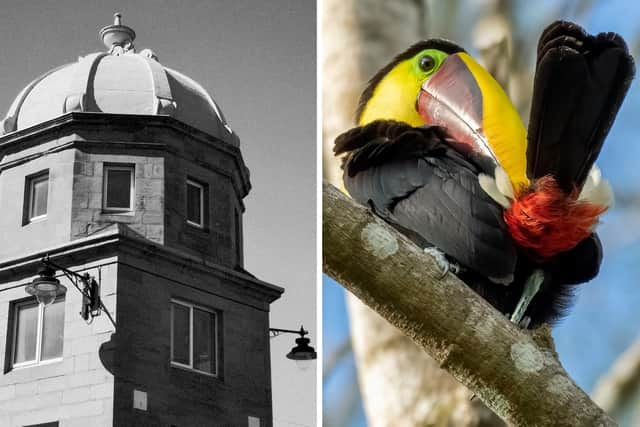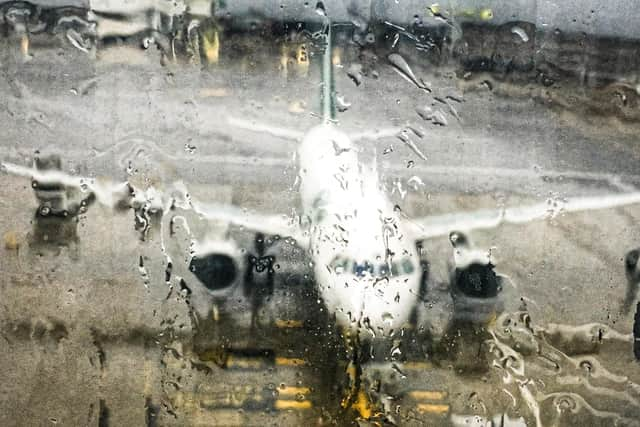Morpeth Camera Club: Members showcase their skills during '4 and 20' evening
and live on Freeview channel 276
Following a trip to Costa Rica, Paul Appleby opened the proceedings with some exceptional images of its native birds and wildlife.
Travelling 1,800km in 20 days, his trip took him through jungle and backwaters to Potrero Beach, Palo Verde, Baru and Carara National Parks, Monteverde Cloud Forest and Talamanca National Reserves. He gave a flowing commentary on the behaviour and habitat of a variety of wading birds, sloths, dragonflies, monkeys, and reptiles.
Advertisement
Hide AdAdvertisement
Hide AdPaul managed to remember all of their exotic names such as the Coati, Motmot, Green Violet Eared Hummingbird, Limpkin, Great Tailed Grackle, Yellow-throated Euphonia and Masked Tityra. His great photographs of so many exotic, vibrantly coloured birds and wildlife are a testament to his photographic skills.


Helen Vaudrey followed and began by saying that as a trained artist, she uses her camera as a sketch book. Those in attendance saw images of New Orleans, with flood-damaged doors left by Hurricane Katrina, Alnwick’s alleyways and passages, The Reichstag in Berlin, The London Eye and textured stone steps in Edinburgh.
Throughout her presentation, she explained why she had taken certain images – she looked for shapes, textures, proportions, light, verticals, reflections, diagonals and wanted to evoke a sense of movement. She also loves atmospheric night time photography in suburbia depicting street life.
Images of tree shapes, frosty leaves, mossy textures, sheep silhouettes and roots from storm damaged trees followed. Members saw desaturated, soft images of a ship approaching harbour and skyscrapers, which possessed an ethereal quality.
Advertisement
Hide AdAdvertisement
Hide AdMinimalistic groynes, rocks and abstract reflections, while making use of negative space, concluded her eclectic choice of images.


Martin Goble came on next with a Chase Jarvis quotation; ‘the best camera is the one you have with you’, and in this case, Martin showed shots taken with his mobile phone. His presentation was based on his daily commute; through train and plane windows while travelling to different cities on the continent, at home and whilst walking from various hotels to his place of work.
Those in attendance saw Linea, glass-clad railway stations, Son Et Lumiere patterns of colour projected on to the Grand-Place, Brussels, colourful night time images of a Christmas market and London cityscapes through glass after rain.
Office buildings in India, an escalator abstract, bright office interiors in Helsinki, modern architecture and reflective glass of skyscrapers at La Defence in Paris followed.
Advertisement
Hide AdAdvertisement
Hide AdMartin went on to show images taken in Milan, Haarlem, Amersfoort, Netherlands, the Duomo by day and night, and the architecture of King’s Cross Station. Throughout his talk, Martin provided humorous anecdotes of his travels.
To conclude the evening, club chairman Peter Downs gave a presentation entitled ‘Imagination Let Loose’. His mantra is that rules stifle photography and that there are no rules in his opinion. He continued with a Rami quotation: ‘Why do you stay in prison when the door is wide open?’
Blended computer-generated images followed; a Blyth abstract and motion blur woodland scenes, firstly showing the original and then a series of minimalistic, desaturated versions with added mist for atmosphere. Sand patterns, Lynemouth Beach, and a fishing boat that had been stylised to create something different.
He asked the audience a rhetorical question: ‘Are these photographs or digital art?’ Throughout his presentation, Peter explained his methods using gradients, motion blur and fading to create minimalism.
Showing how he removes all detail from an image until it is stripped back to create a hint of a picture, Peter believes that it encourages the use of imagination and leaves it open to interpretation.